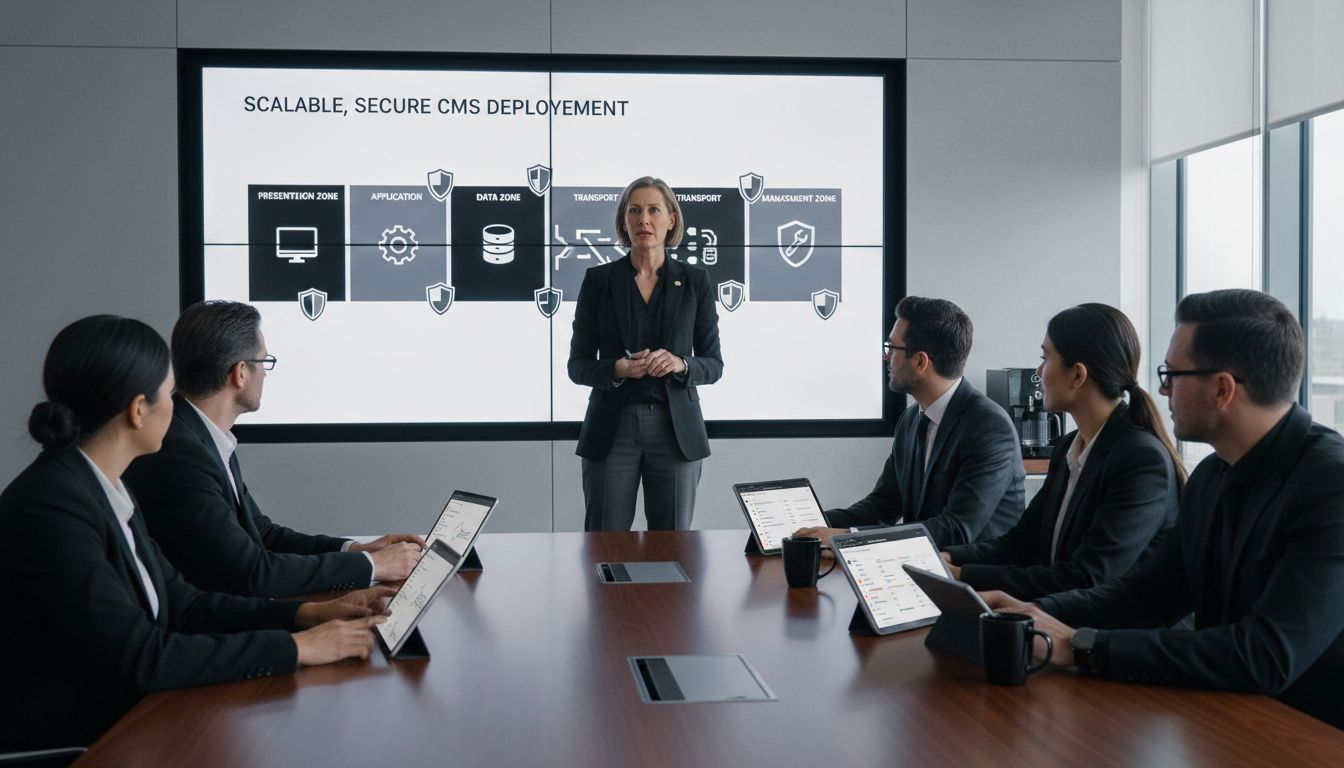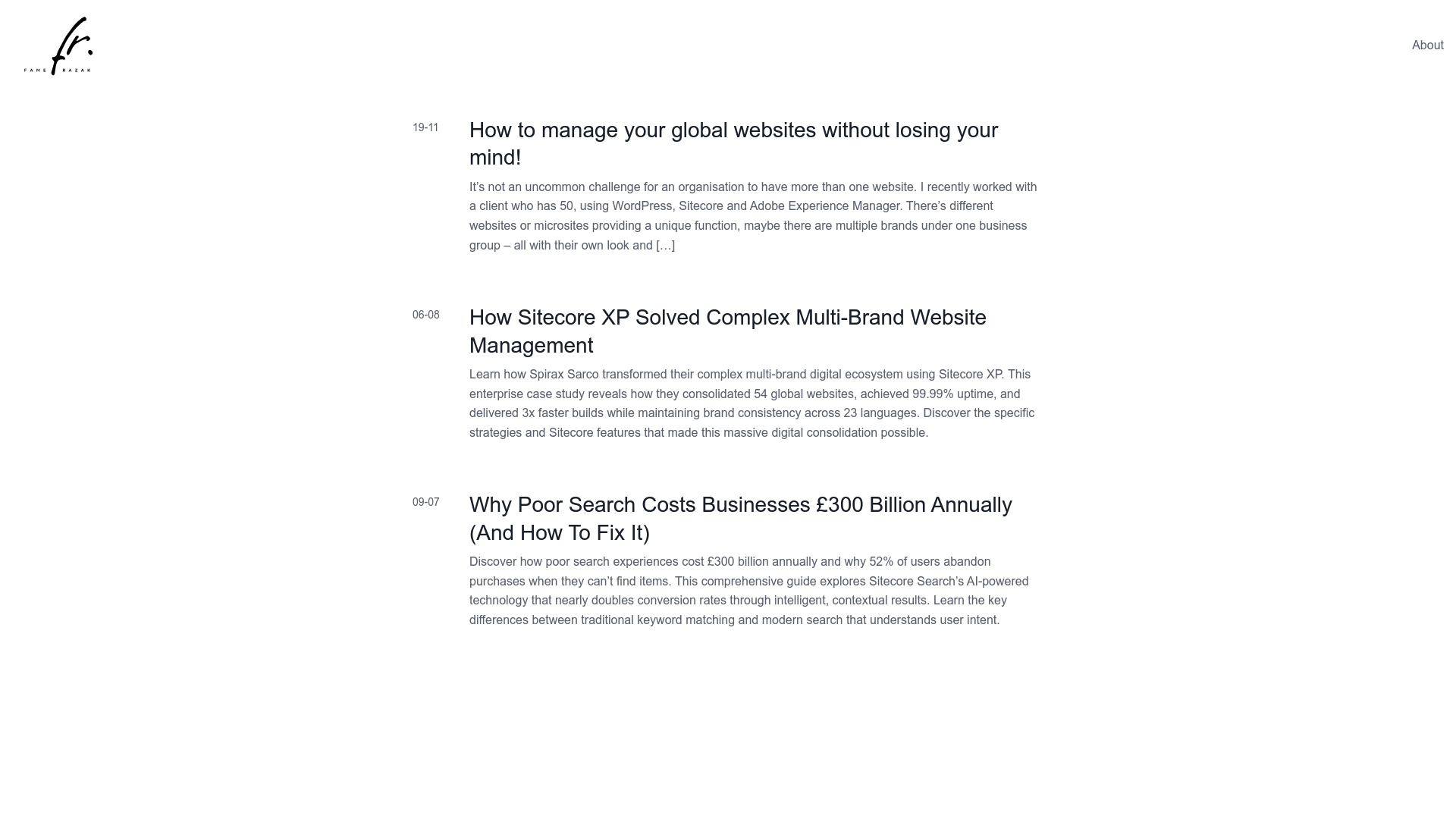Multi‑Site CMS Checklist: Complete Expert Guide
Did you know that nearly 70% of large organisations manage multiple websites under different brands or regions? Managing all those digital properties can quickly become overwhelming if you do not have the right system in place. A multi-site CMS offers a central hub for streamlined content management, governance, and security. With the right approach, organisations can reduce complexity, strengthen brand consistency, and make their digital operations far more efficient.
Table of Contents
- Defining Multi‑Site CMS Fundamentals
- Comparing Multi‑Site CMS Approaches
- Establishing Architecture And Infrastructure Prerequisites
- Planning Governance, Workflows And Localization
- Ensuring Security, Access, And Compliance
- Budgeting, Costs, And Risk Mitigation
Key Takeaways
| Point | Details |
|---|---|
| Centralized Management | Multi-site CMS systems streamline the management of diverse websites, enhancing efficiency through centralized content creation and deployment. |
| Architectural Flexibility | Organizations can choose from monolithic, headless, or hybrid CMS models, each offering unique strengths to meet specific operational needs. |
| Robust Security Frameworks | Implementations need comprehensive security strategies, including access controls and compliance measures, to protect sensitive digital assets. |
| Strategic Financial Planning | Careful budgeting and risk assessment are essential to manage investments in multi-site CMS systems effectively, ensuring long-term return on investment. |
Defining Multi‑Site CMS Fundamentals
A multi-site CMS represents a sophisticated digital content management ecosystem enabling organisations to create, manage, and deploy multiple websites from a single, centralised platform. Unlike traditional single-site content management systems, multi-site CMSs provide comprehensive infrastructure for businesses managing diverse digital properties across different regions, brands, or operational needs.
The core architecture of a multi-site CMS empowers teams to streamline website management through several critical capabilities:
- Centralised Content Management: Create, edit, and publish content across multiple sites simultaneously
- Shared Resource Libraries: Leverage consistent design assets, templates, and media across different websites
- Granular User Permissions: Configure precise access controls for different team members and site administrators
- Scalable Infrastructure: Rapidly deploy new websites without rebuilding entire technological frameworks
Practically speaking, multi-site CMSs solve complex challenges for digital teams managing expansive online portfolios. They eliminate redundant workflows, reduce technological overhead, and create opportunities for strategic content distribution. By providing a unified management environment, these systems transform how organisations approach digital content creation and website governance.
The strategic value lies in operational efficiency. Digital agencies and enterprise organisations can maintain brand consistency, reduce technological complexity, and accelerate website deployment cycles through intelligent, integrated content management platforms.
Comparing Multi‑Site CMS Approaches
Navigating the landscape of multi-site CMS platforms reveals three primary architectural approaches: monolithic, headless, and hybrid content management systems. Each strategy offers unique advantages and potential limitations for organisations seeking comprehensive digital content management solutions.
The monolithic approach represents a traditional, all-in-one platform where content creation, design, and presentation layers are tightly integrated. These systems provide:
- Straightforward implementation
- Built-in design templates
- Simplified content management workflow
- Lower initial technical complexity
In contrast, headless CMS architectures decouple content management from presentation layers, offering unprecedented flexibility. By providing content via APIs, headless systems enable organisations to:
- Distribute content across multiple digital platforms
- Support omnichannel content strategies
- Enable advanced customisation
- Facilitate faster development cycles
The hybrid approach emerges as a strategic compromise, blending monolithic reliability with headless flexibility. This model allows organisations to maintain core content management capabilities while supporting advanced integration and distribution requirements. Digital teams gain the ability to balance technological innovation with operational stability, creating more adaptable and future-proof content ecosystems.
Ultimately, selecting the right multi-site CMS approach depends on specific organisational requirements, technical capabilities, scalability needs, and long-term digital transformation strategies. Careful evaluation of each architectural model ensures alignment between technological infrastructure and strategic business objectives.
Here’s a comparison of the primary multi-site CMS architectural approaches:
![]()
| Approach | Key Advantages | Possible Limitations |
|---|---|---|
| Monolithic | Simple setup Built-in templates Low complexity |
Limited flexibility Less scalability |
| Headless | API-based distribution Omnichannel support Customisation |
Requires developer expertise Complex integration |
| Hybrid | Balanced flexibility Core management features Future-proof |
May add initial complexity Requires robust oversight |
Establishing Architecture And Infrastructure Prerequisites
Building a robust multi-site CMS architecture requires strategic planning and comprehensive infrastructure considerations. CMS Services Framework emphasizes a Defense-in-Depth strategy that prioritizes system integrity and comprehensive security protocols across digital ecosystems.
The architectural framework for multi-site CMS implementations typically encompasses several critical infrastructure zones:
- Presentation Layer: User interface and client-side interactions
- Application Layer: Core business logic and content management functionality
- Data Layer: Content storage, database management, and data governance
- Transport Layer: Network communication and data transmission protocols
- Management Layer: System monitoring, access controls, and administrative functions
CMS Cloud Architecture recommends a multi-zone approach that enables organisations to implement sophisticated, secure, and scalable digital infrastructure. This approach ensures that each architectural zone maintains specific security parameters and operational responsibilities, creating a comprehensive and modular system design.
Successful multi-site CMS infrastructure demands meticulous attention to several prerequisite considerations:
- Scalable cloud infrastructure
- Robust security mechanisms
- Flexible API integrations
- Comprehensive access management
- Performance monitoring capabilities
By establishing a well-designed architectural foundation, digital teams can create resilient, adaptable content management ecosystems that support complex organisational requirements while maintaining optimal performance and security standards.

Planning Governance, Workflows And Localization
Governance represents the critical backbone of successful multi-site CMS implementations. CMS Governance Framework emphasizes comprehensive investment management and integrated life cycle requirements that ensure strategic alignment across digital platforms.
Effective workflow design in multi-site CMS environments requires establishing clear operational protocols:
- Centralized content approval processes
- Role-based access controls
- Consistent content standards
- Cross-team collaboration mechanisms
- Standardized content creation templates
Localization Research highlights the critical importance of geographical adaptability. Multi-site CMS platforms enable organisations to create targeted experiences by dynamically presenting content based on user location, language preferences, and regional requirements. This approach transforms digital experiences from generic interactions to nuanced, culturally relevant engagements.
Successful governance models integrate several key dimensions:
- Strategic alignment between technological capabilities and business objectives
- Robust performance monitoring
- Comprehensive compliance frameworks
- Flexible adaptation mechanisms
- Transparent reporting and accountability
By implementing sophisticated governance, workflow, and localization strategies, digital teams can create dynamic, responsive multi-site CMS ecosystems that balance operational efficiency with strategic flexibility.
Ensuring Security, Access, And Compliance
CMS Information Security and Privacy Program provides comprehensive frameworks for protecting sensitive digital assets within multi-site content management ecosystems. Robust security strategies demand a holistic approach that integrates technical safeguards, administrative protocols, and continuous monitoring mechanisms.
Access management in multi-site CMS environments requires implementing sophisticated control mechanisms:
- Granular role-based permissions
- Multi-factor authentication
- Comprehensive user activity logging
- Dynamic access governance
- Automated permission management workflows
CMS Services Framework recommends a Defense-in-Depth strategy that establishes multiple layers of security protection. This approach emphasizes least privilege access principles, ensuring that users can only interact with systems and data explicitly required for their specific roles and responsibilities.
Compliance considerations for multi-site CMS implementations encompass several critical dimensions:
- Data privacy regulations
- Industry-specific security standards
- International data protection requirements
- Audit trail maintenance
- Secure data transmission protocols
By integrating comprehensive security architectures, organisations can create resilient multi-site CMS platforms that protect sensitive information, maintain regulatory compliance, and provide seamless, secure digital experiences across diverse operational environments.
Budgeting, Costs, And Risk Mitigation
CMS IT Modernization Guidelines emphasize that multi-site CMS implementations represent significant strategic investments requiring meticulous financial planning and comprehensive risk assessment. Organisations must approach these technological transformations as multi-year programs demanding sophisticated budgetary frameworks and proactive management strategies.
Key cost considerations for multi-site CMS investments include:
- Initial platform implementation expenses
- Ongoing infrastructure maintenance
- Content migration and integration costs
- Training and change management
- Scalability and future expansion provisions
CMS Cloud Strategy recommends hybrid cloud environments as cost-effective solutions that provide managed Infrastructure-as-a-Service capabilities. This approach enables organisations to balance technological requirements with financial constraints, offering flexible deployment models that optimize resource allocation and minimize potential financial risks.
Risk mitigation strategies for multi-site CMS investments should encompass:
- Comprehensive vendor evaluation processes
- Phased implementation roadmaps
- Continuous performance monitoring
- Contingency budget allocations
- Regular technological and financial reassessments
Successful multi-site CMS budgeting demands a holistic approach that balances technological ambition with financial prudence, ensuring organisations can deliver sophisticated digital experiences without compromising fiscal responsibility.
Overcome Multi‑Site CMS Challenges with Expert Guidance
Managing multiple digital properties faces unique hurdles like coordinating centralised content, maintaining security across layers, and ensuring seamless localisation and governance. The complexity of balancing monolithic, headless, or hybrid CMS architectures often creates uncertainty about the right path forward. If you want to break free from operational bottlenecks and align your digital strategy with scalable technology, the key lies in trusted, experienced leadership.

Discover how Fame Razak, with over 25 years of experience as a Fractional CTO, helps creative and digital agencies confidently deliver multi-site CMS projects without the overhead of a full-time technical leader. Benefit from proven frameworks that streamline architecture planning, security protocols, governance, and cost management. Take the next step towards future-ready, profitable digital platforms by visiting Fame Razak for actionable insights and personalised technical strategy. Start turning today’s multi-site CMS checklist into tomorrow’s success story.
Frequently Asked Questions
What is a multi-site CMS?
A multi-site CMS is a digital content management system that allows organizations to create, manage, and deploy multiple websites from a centralized platform, streamlining workflows and maintaining brand consistency across diverse digital properties.
What are the architectural approaches to multi-site CMS platforms?
There are three primary approaches: monolithic, headless, and hybrid. Monolithic systems offer simplicity, headless systems provide flexibility and omnichannel capabilities, while hybrid systems combine features of both to offer balanced performance and scalability.
What are the key benefits of using a multi-site CMS?
A multi-site CMS enables centralized content management, shared resource libraries, granular user permissions, and scalable infrastructure, which improves operational efficiency and accelerates website deployment cycles for organizations.
How do I ensure security and compliance in a multi-site CMS?
Implement robust security strategies that include granular role-based access controls, multi-factor authentication, and continuous monitoring. Make sure to comply with data privacy regulations and maintain audit trails for secure data management.
